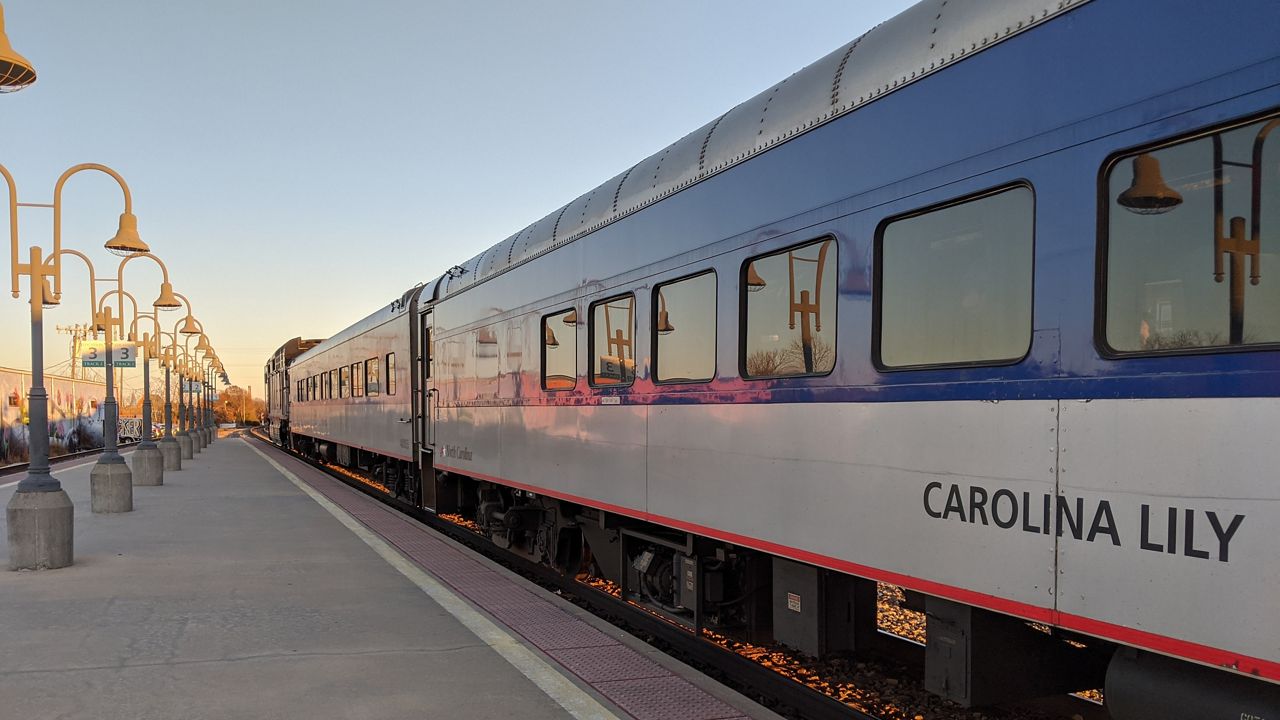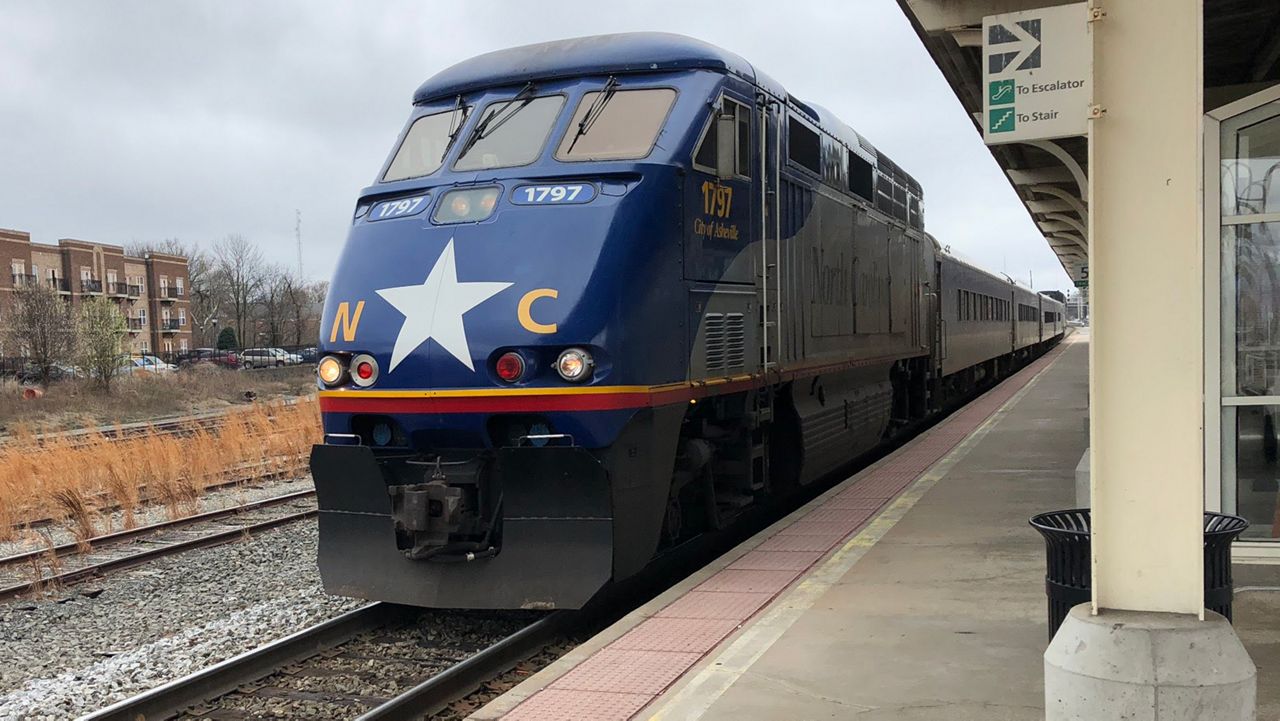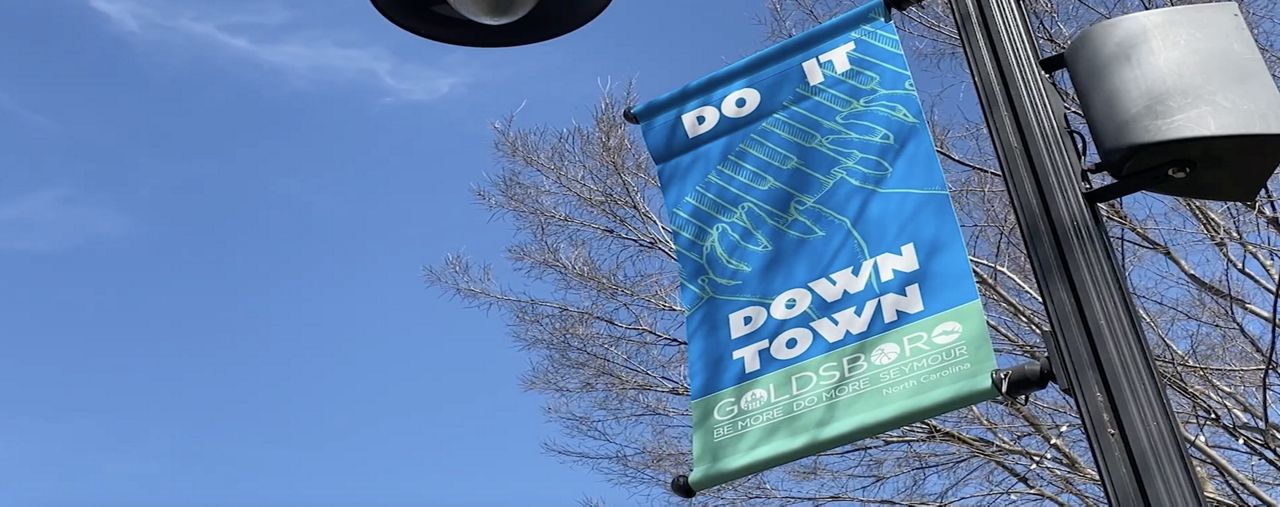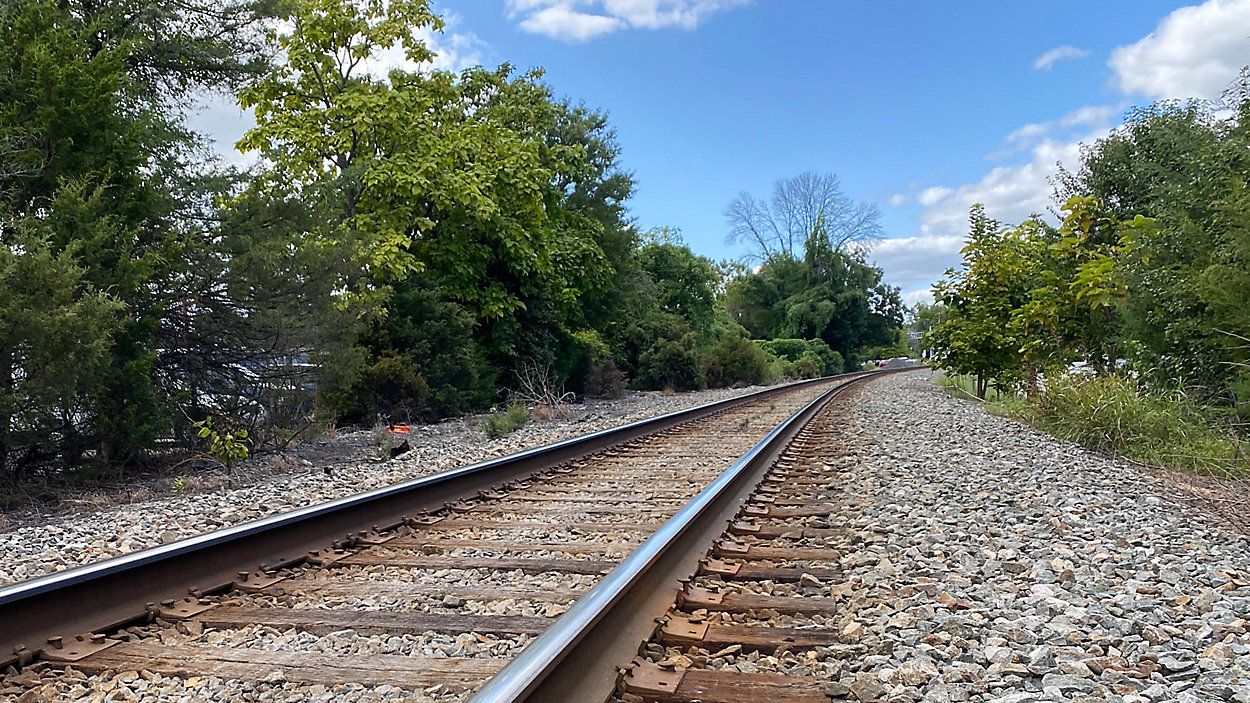A series of federal grants is laying the tracks to increase passenger rail service in North Carolina.
The U.S. Department of Transportation announced the grants last week: $1 billion for a high speed rail line from Raleigh to Richmond, and seven separate $500,000 grants to look at opening new lines for passenger trains.
Transportation Sec. Pete Buttigeig visited Raleigh Monday to celebrate the new rail funding, along with the governor and other elected officials.
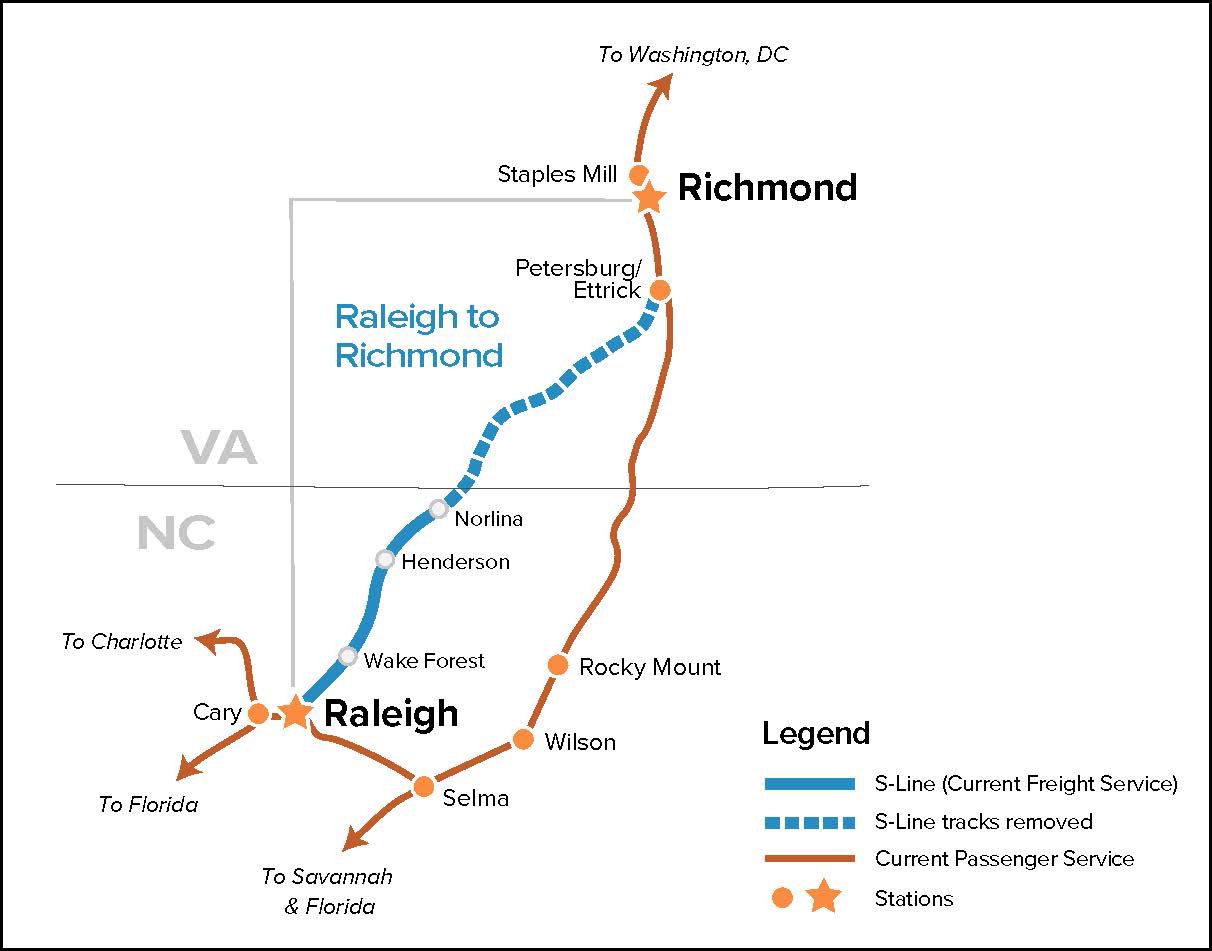
“Our great economic success also brings challenges and you have to make sure you can handle the increased population that’s coming with all of these jobs we’re bringing, not only to our urban areas but to our rural areas as well,” Gov. Roy Cooper said Monday.
The smaller grants will go to improving the existing Amtrak line between Raleigh and Charlotte and expanding the rail network in the state.
High speed rail line
The biggest grant announced last week for North Carolina is $1.09 billion to design and build the first segment of a high speed rail line between Raleigh and Richmond. Called the S-Line, the new 162- mile passenger route has been in the works for about two decades.
“This is great news and underscores our successful efforts to build a transportation system that works for all North Carolinians,” the governor said in a statement last week. “The S-Line is a critical project that will provide fast, frequent and reliable service connecting North Carolina, Virginia and the Northeast.”
“It extends our already popular passenger rail service between Charlotte and Raleigh, and provides people, especially those in underserved areas, a safe, convenient and inexpensive way to get where they’re going,” he said.
The S-Line corridor is on existing tracks owned by freight carrier CSX. Virginia has already bought its segment of the rail line and North Carolina is in the final stages to buy its part of the corridor, state officials said.
The money will pay for the final engineering design, buying the right-of-way and construction costs for the portion of the route from Raleigh to Wake Forest. The state will also use the money for new and upgraded track, and replacing crossings with overpasses.
The existing train route from Raleigh north to Richmond and Washington D.C. goes out to the east, through Johnston County before turning north. The new S-Line goes north out of Raleigh, with stops in Wake Forest, Henderson and Norlina.
North Carolina DOT said it hopes to have the final design work done in 2027, but there is no date set for where the new route could begin serving passengers.
Passenger rail to Wilmington and Asheville?
The smaller grants announced last week will go to looking at expanding rail service in North Carolina.
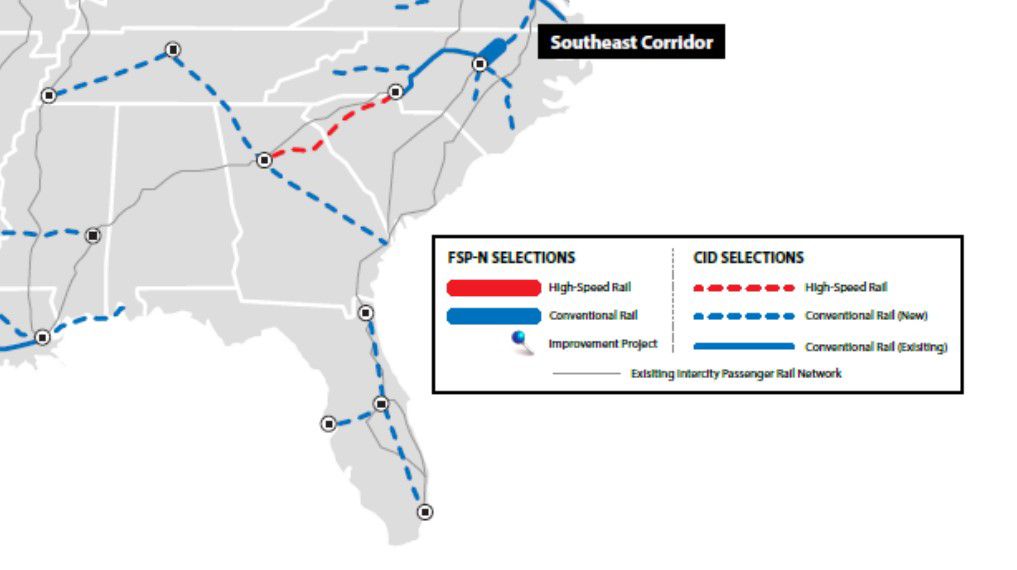
“This $3.5 million in grant funding to identify and develop potential rail lines across North Carolina could be transformational in how North Carolinians travel,” Sen. Thom Tillis said in a statement.
One grant will look at reviving the passenger rail service from Raleigh to Wilmington, which last ran in 1968.
The route would use an existing line, but parts of it have been abandoned and would need to be rebuilt, according to Tillis’s office. The state would also need to build new stations on the route that would stop through Goldsboro on the way to Wilmington.
Another route on the docket could connect Asheville to the existing Raleigh to Charlotte service.
"The proposed Corridor would provide new service on an existing alignment between Asheville and Salisbury in western North Carolina, following a line that last hosted passenger trains in 1975," Tillis’s office said.
There is no timeline for when these routes could actually be taking passengers to Wilmington or Asheville, but the funding is the first step to get the projects moving.
Other routes in N.C.
North Carolina received five other $500,000 grants to look at other routes:
- Charlotte to Kings Mountain Corridor: "The proposed corridor would connect Kings Mountain, North Carolina to Charlotte, North Carolina. The proposed corridor would provide new service on existing alignment with capacity improvements west of the Charlotte Gateway Station and likely extending service to Kings Mountain, in addition to track, crossover, or signal improvements."
- Winston-Salem to Raleigh Corridor: "The proposed corridor would connect Winston-Salem, NC with Raleigh, N.C., with intermediate stops at Greensboro, Burlington, Durham, and Cary, complementing the existing state-supported Piedmont and Carolinian services. The proposed corridor would also include new frequencies, improvements to reliability, and new stations."
- Fayetteville to Raleigh Corridor: "The proposed corridor would provide a new service connecting Fayetteville, N.C. with Raleigh, NC, with intermediate stops at Lillington, and Fuquay-Varina, N.C., using an existing alignment."
- Charlotte to Washington, D.C., Corridor: "The proposed corridor would provide improvements to the existing state-supported Carolinian service between Charlotte, N.C. and Washington, D.C. (with existing service continuing north to New York, N.Y.) by improving/adding services in Greensboro, Winston-Salem, High Point, Raleigh, Durham, Salisbury, and Burlington, N.C. and Petersburg, Richmond, Fredericksburg and Alexandria, Virginia by addressing infrastructure capacity constraints. Improvements include constructing/rehabilitating a partially abandoned alignment between Raleigh, N.C. and Petersburg, VA that is more direct than the existing routing through Rocky Mount, N.C., potentially shaving more than an hour off the end-to-end travel time."
- Charlotte to Atlanta, Georgia, Corridor: "The proposed corridor would provide new service on a new high speed rail alignment between Charlotte, N.C. and Atlanta, GA, with potential intermediate stops including Greenville-Spartanburg International Airport in South Carolina and Augusta and Athens, GA, then serving a downtown Atlanta station and terminating at Atlanta’s Hartsfield-Jackson International Airport, the world’s busiest airport."
Where’s the money coming from?
The money coming to North Carolina is part of a $8.2 billion package announced last week.
The money comes from the Bipartisan Infrastructure Law, which Democrats point to as a key accomplishment by the Biden administration.
As the name implies, it passed with bipartisan support in 2021.
“Today, the Biden-Harris Administration takes another historic step to deliver the passenger rail system that Americans have been calling for – with $8.2 billion for faster, more reliable, expanded train service across the country,” Buttigieg said in a statement Friday.
“With this funding, we’ll deliver America’s first high-speed rail on a route between Southern California and Las Vegas, complete major upgrades for riders in Virginia, North Carolina, Illinois, Pennsylvania, Maine, Montana, and Alaska, and announce a comprehensive plan that makes it easier to expand passenger rail lines in 44 states,” he said.
The biggest project in the package is $3 billion for high speed rail between Los Angeles and Las Vegas.
“This $1 billion grant for North Carolina to make progress on the Raleigh to Richmond Rail Line is a big win for economic development in the region,” said Tillis, a Republican.
“I’m proud this investment was made possible by the Bipartisan Infrastructure Law that I helped negotiate, write, and pass into law,” he said in a statement. On X, formerly Twitter, Tillis thanked Buttigieg for sending some of the money to support these big projects in North Carolina.
A vision for rail in the South
The new federal spending on rail is part of a decades-long effort to build more passenger rail in the South.
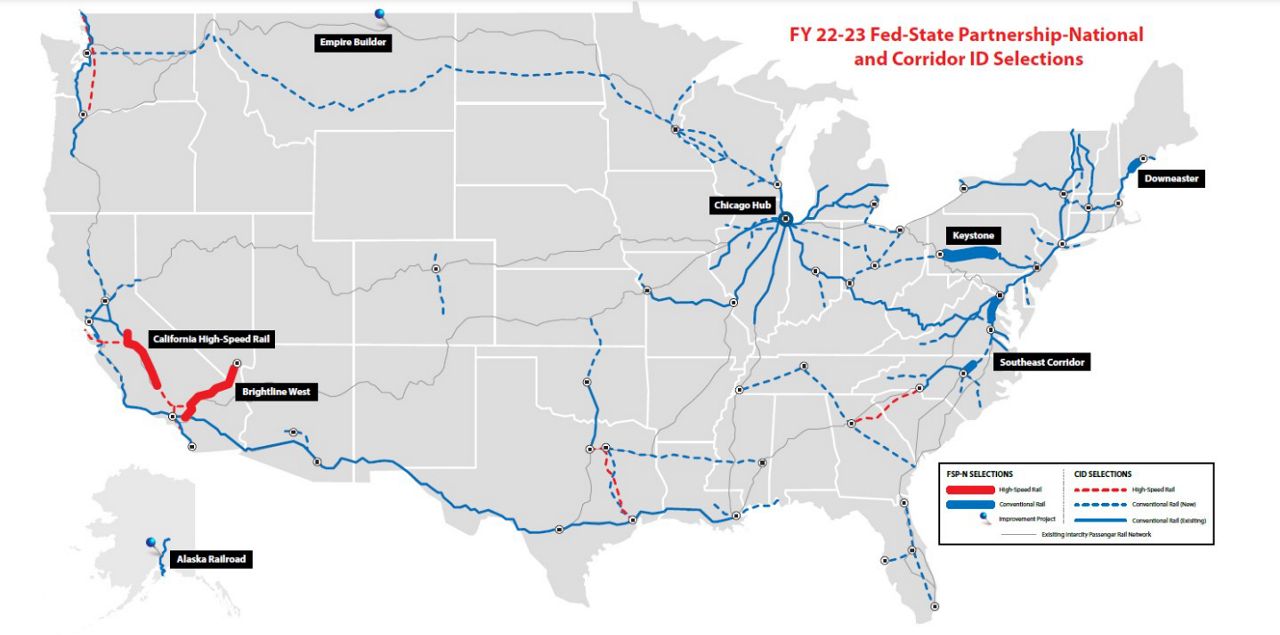
The Raleigh to Richmond line is one segment of a broader plan to run high speed rail that will connect Atlanta, up through the Carolinas and Virginia, to Washington D.C. and the northeast corridor.
“President Biden’s Bipartisan Infrastructure Law gave us a once-in-a-generation opportunity to think smart and think big about the future of rail in America, and we are taking full advantage of the resources we have to advance world-class passenger rail services nationwide,” said Federal Rail Administration’s Amit Bose.
“Today’s announcement is another step forward as we advance transformative projects that will carry Americans for decades to come and provide them with convenient, climate-friendly alternatives to congested roads and airports,” he said. “We’re thinking about the future too with comprehensive and systematic planning efforts to transform the U.S. intercity passenger rail network now and in the years to come.”





